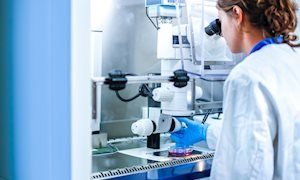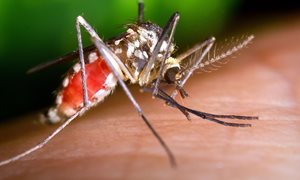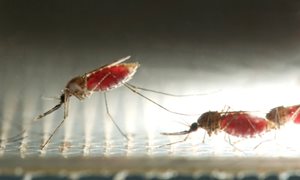 It was Tuesday 13 June 2013, a classical ‘Terror Tuesday’ as we call them on the lab of Experimental Internal Medicine. Every Tuesday, we receive three bags of blood from bloodbank Sanquin, and the whole lab needs blood to perform experiments. It is a sometimes cosy but mostly chaotic day, since everyone needs cells from the same bags of blood and everyone also needs a sterile place to work, and there are only a handful. On this particular day in June 2013 I also performed an experiment, unaware that the experiment I was performing that day would result in a publication in Cell 4,5 years later! Four and a half years, that sounds so long.. Today, I will give you some insight in how this small experiment would grow into a significant publication, and of course it is not a smooth story that is waiting for you. Join me for a ride on the research rollercoaster!
It was Tuesday 13 June 2013, a classical ‘Terror Tuesday’ as we call them on the lab of Experimental Internal Medicine. Every Tuesday, we receive three bags of blood from bloodbank Sanquin, and the whole lab needs blood to perform experiments. It is a sometimes cosy but mostly chaotic day, since everyone needs cells from the same bags of blood and everyone also needs a sterile place to work, and there are only a handful. On this particular day in June 2013 I also performed an experiment, unaware that the experiment I was performing that day would result in a publication in Cell 4,5 years later! Four and a half years, that sounds so long.. Today, I will give you some insight in how this small experiment would grow into a significant publication, and of course it is not a smooth story that is waiting for you. Join me for a ride on the research rollercoaster!
Something about the publication
In my research, I study how white blood cells from the innate immune system, in particular monocytes, can get reprogrammed. Upon reprogramming, the white blood cells become hyperactive after a first stimulation and respond more strongly to a next stimulation, we call this ‘trained immunity’. In some cases, trained immunity is a good thing: when an infection needs to be cleared for example. But in patients with chronic inflammatory diseases, trained immunity can actually do more harm. Therefore we need to know the mechanism of trained immunity. I showed that there is an important role for the production of cholesterol for the reprogramming of monocytes. When a monocyte produces cholesterol, a side product is formed, called mevalonate. This mevalonate seems to be partly responsible for the training of the immune cell. After a first encounter with mevalonate, the white blood cell becomes reprogrammed and responds more strongly upon a next stimulation. We saw that white blood cells from patients that produce way too much mevalonate due to a genetic defect, have a ‘trained’ phenotype. This led to the idea to study the effect of statins on this process. Statins are cheap well-known cholesterol lowering drugs. Would statins be able to inhibit the reprogramming of white blood cells, because mevalonate would not be produced anymore? It was exactly that experiment that I performed on the now famous 13 June 2013. The results of that and the rest of the 4,5 years will appear in Cell on 11 January 2018, together with a couple of other papers about the same topic. More about that can be read in the press release.The Research Rollercoaster
So, what happened during these 4,5 years? Did I work on the same project the whole time? Did everything go perfect and smooth? Well, to be short: NO. Research is living on ups and downs, like a rollercoaster, practically and emotionally. I summarized the Cell-rollercoaster for you in a figure:As expected, we were super excited about the first results: these statins were really inhibiting the reprogramming of white blood cells! We were already dreaming about saving a lot of patients suffering from inflammatory diseases by using cheap drugs that were already available on the market.. Living on the ‘high’ of interesting results. But then *splash!* the dream bubble collapsed. Some parts of the story were not easy to explain. Other researchers found results that were not in line with our findings. What to do with that? Is what we see not true and what others see is? Where is the logic?
I continued with extra experiments, many Terror Tuesdays went by, and the story started to make sense again. New questions raised and we tried to answer them, research is never finished. I worked on other projects on the side, started some new ones as well. And suddenly – you know what happens when you are having fun – time flew and it was the end of 2015, almost the end of my PhD! Help! I did not have enough time to finish the whole story, and we tried to combine our data with data from another colleague, who studied another pathway of the same topic. That seemed a good idea but 3 weeks before the end of my PhD, we found out we just had too much data. So, my data were removed again and there it was: an unfinished story and three weeks left.
I was at a loss, but there he was: my friend and PhD-candidate colleague Rob Arts who asked if I needed help with finishing the story. Wow! Yes please! - Okay no, this sounds too cheesy. He is co-first author now, so for him, there was a lot to win as well. This is not only karma points ;) – But in the end I did need help, so together with our supervisors we thought of a way to finish the story. We wanted to translate our findings in the lab to patients, and we decided to study patients with a disease called HIDS, Hyper IgD Syndrome. These patients have a genetic defect which results in an increased production of our research topic, the side-product mevalonate. As a phenotypic result, they suffer from periods of fever attacks. And indeed, the white blood cells from the HIDS patients behaved like we hypothesized, they are ‘trained’. But then we encountered the next hurdle: these patients were so severely ill and the timing of their fever attacks was so different, that the differences between the patients were really big. Also, it is a rare disease, so we were able to include three patients and this was already a lot. Would a high impact journal accept a study on only three patients?
Our always optimistic supervisor Mihai Netea said three patients would be enough, so we started writing. He found out that our paper was similar to other papers of colleagues abroad, and we decided to publish them back-to-back. Cell seemed interested, so we were excited, but unfortunately there it was: a rejection. ‘We want all the other papers, but send yours to Immunity, it fits better there’ they said. Well, Immunity is not bad either, so we rewrote the article and sent it to Immunity. ‘Send it to Cell again, we actually want it’ was the reply. Huh? Well, who are we to say no??
And then the waiting starts. Waiting, waiting, waiting. In June 2017, we finally received the e-mail saying that they found our paper interesting for their journal but that revision experiments were warranted: they wanted some extra mechanistic insight. Yay! Revision! Luckily, I did not have my PhD defense in the same month (ehh yes, I did have my defense, why do these things always come at the same time?). But with hard work, skipping some holidays and more hard work (revision.. the magic period in which time disappears and everyone knows not to talk to you in the lab) we did it! I performed as many experiments in 2 months as I would usually do in 6, I used every technique I knew, but we just wanted to impress the reviewers so much. And we did: finally, at the end of October, we received the response: a YES! Paper accepted!
What an amazing feeling. I was as happy as when my first paper ever got accepted (while I thought that feeling would never come back again). I celebrated with drinks with the whole lab and still now, months later, I am living a dream, as if it is not real. Four and a half years, what a period, ups and downs and loads of work. But mostly it was an amazing study. I am happy we continued after all, for all the hands that helped me and all the colleagues that supported me. Without help from colleagues but also supervisors that are always there with bright insight, we would not have established this. Let’s celebrate it with a lot of good publicity and cool future research. The highs will always win it from the lows. Cheers!
Blog by Siroon Bekkering.
Related news items

Grants for research on magnesium deficiency and malaria Vidis for Felix Hol and Jeroen de Baaij
1 July 2022 Radboudumc researchers Jeroen de Baaij and Felix Hol both receive an NWO Vidi grant for their research, respectively on magnesium deficiency in type 2 diabetes and on malaria. go to page
Field research on malaria vaccine offers unexpected surprise
23 May 2022Field research on the effectiveness of a malaria vaccine, came up with unexpected results for an international group of researchers including Benjamin Mordmüller of Radboudumc. The vaccine evokes a broader response against malaria proteins than there are in the vaccine.
go to page
Rubicon grants awarded to three RIMLS researchers
19 April 2022Three researchers have received Rubicon funding from NWO/ZonMw. This will enable Elke Muntjewerff, Laura de Vries and Laurens van de Wiel to do research at a foreign research institute for the next two years.
go to page


